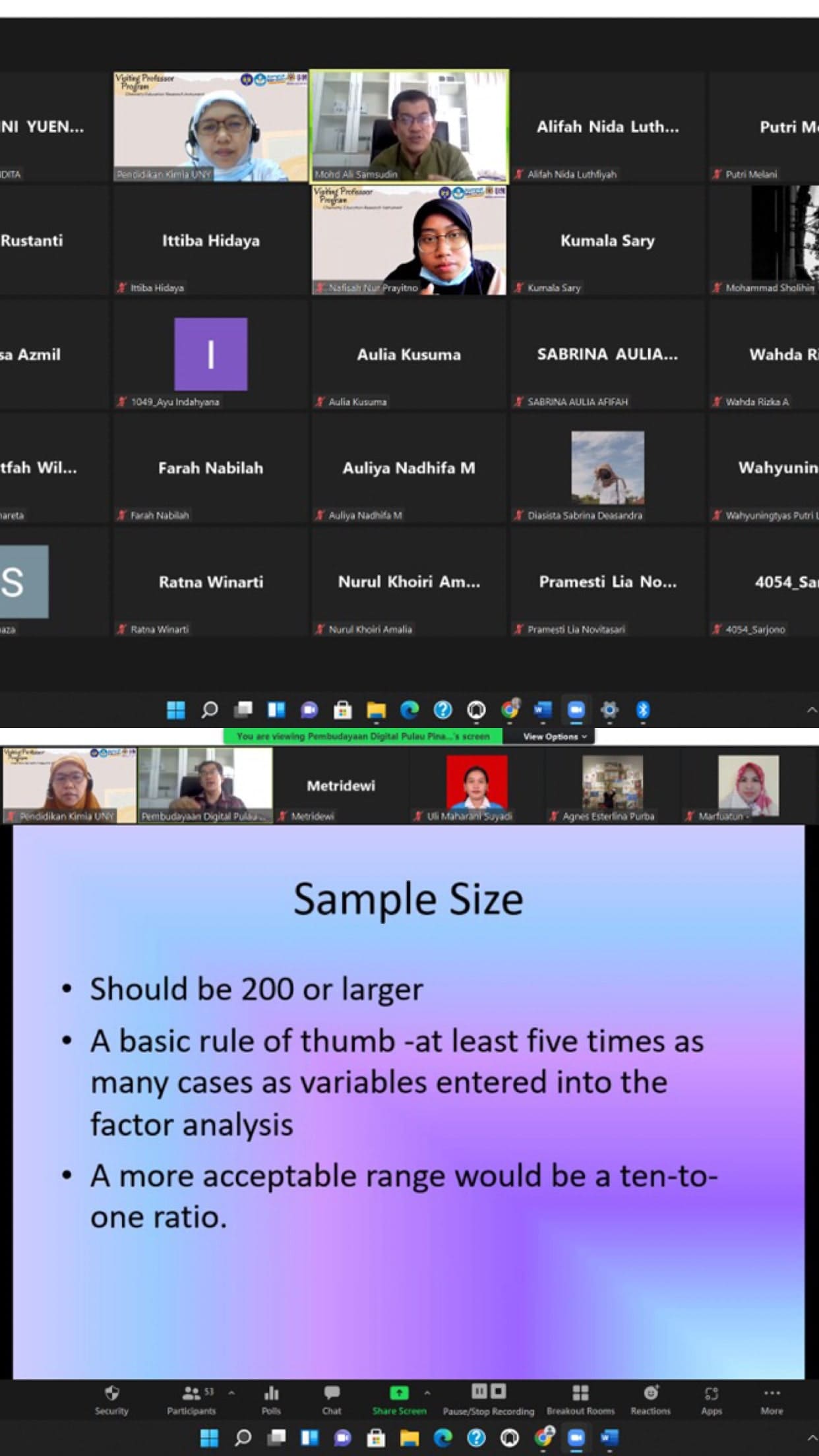 Bahasa Indonesia
Bahasa Indonesia English
English
You are here
VISITING PROFESSOR "INSTRUMEN PENELITIAN PENDIDIKAN KIMIA" DR.MOHD ALI SAMSUDIN

Chemistry education research instruments are one of the mandatory courses for students of the FMIPA UNY Chemistry Education Study Program which is taken in the fifth semester. As a form of implementation of the MBKM Curriculum, and preparing graduates who are ready to compete globally, the Chemistry Education Study Program is holding activities with Assoc. Prof. Mohd Ali Samsudin from the University of Science Malaysia. Assoc. Prof. Mohd Ali Samsudin was present as a lecturer in the chemistry education research instrument course for students of the Chemistry Education Study Program, FMIPA UNY online via Zoom Meeting. Lectures were held in four meetings on 10, 17, 23 and 30 May 2022. The material discussed was the theory of validity and reliability of instruments, the practice of analyzing validity and reliability with SPSS (factor analysis), and the concept of the RASCH model, validation and RASCH practices. . The number of participants who took part in the Guest Lecture activity was 45 students.
On this occasion, Assoc. Prof. Mohd Ali delivered material on factor analysis and Rasch models. Student interaction and participation is built from the start of the lecture using the question and answer method, and small group discussions in breakout room zoom meetings. Based on the explanation of Assoc. Prof. Mohd Ali, the goal of factor analysis is to reduce the large number of correlated measures into a few representative constructs or factors. Variables for factor analysis must be measured on an ordinal scale. The sample size should be 200 or greater as a rule of thumb, at least five times as many cases as the variables included in the factor analysis. Factor analysis is based on the assumption that all variables are correlated to some degree. Factor analysis allows researchers to "reduce" mass numbers into a few representative factors that can then be used for subsequent analysis. Therefore, variables that share the same underlying dimensions should be highly correlated, and variables that measure different dimensions should yield low correlations. The Rasch model is based on the idea of hierarchically appropriate data that is “less than/more than” on a set of interest. For example, if one wants to assess the motivation of teachers who work with families of children with special needs, the assumption is that teachers have more motivation than others. Here there are no variables unless you want to look at individual differences in the characteristics being measured. The Rasch model provides estimates for each item for each individual separately
At the end of each meeting, students are given an assignment to see their understanding regarding factor analysis and the Rasch model that has been explained.
Sistem Informasi
Kontak Kami
Program Studi Pendidikan Kimia
FMIPA Universitas Negeri Yogyakarta
Gedung Dekanat D.07 FMIPA UNY
Kampus Karangmalang Yogyakarta 55281
Telp. (0274)586168 Pes. 115
Email: pend_kimia@uny.ac.id
Copyright © 2024,
